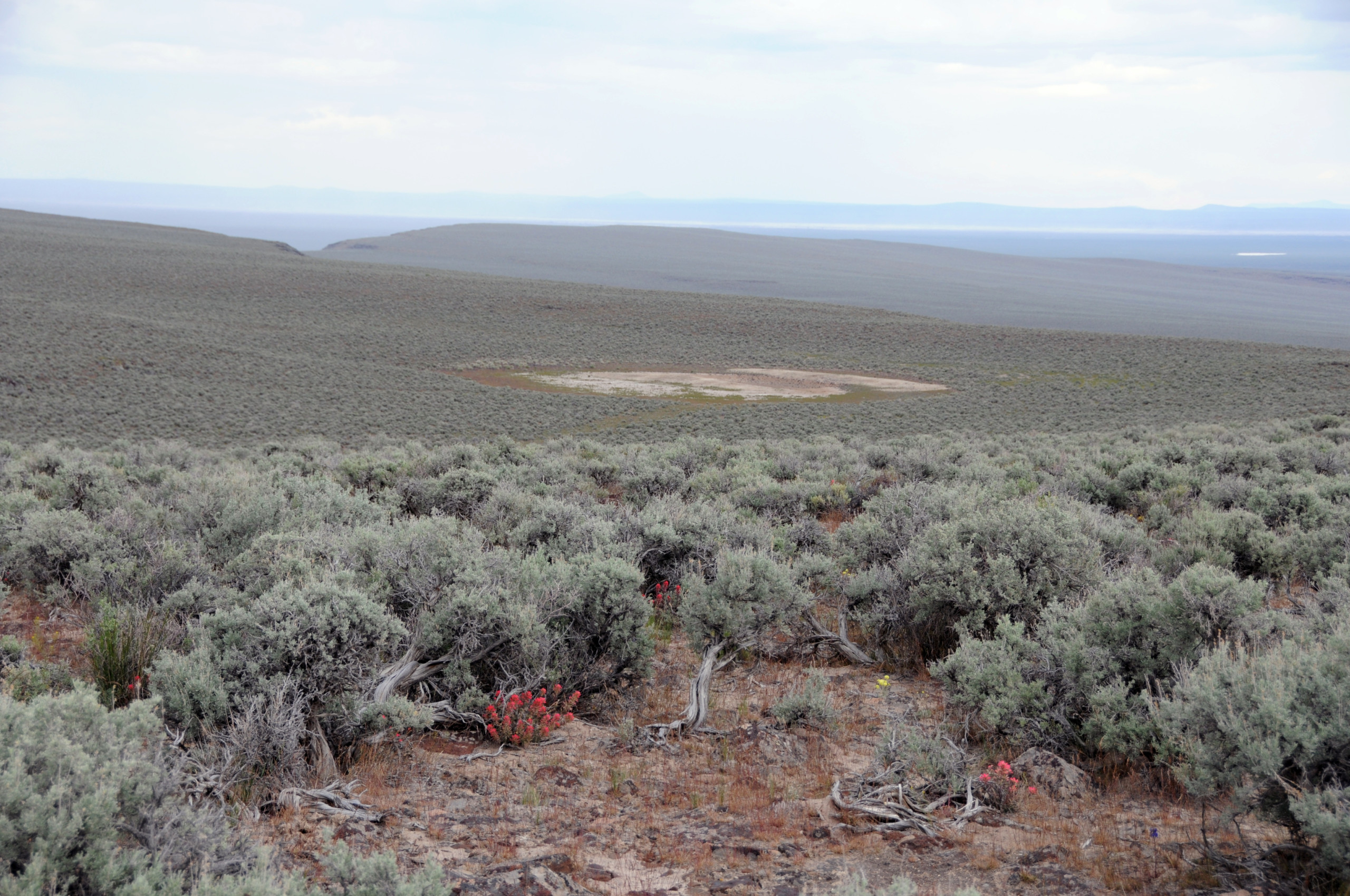When the Mahalls purchased a historic ranch in Silver Lake, it came with a mysterious addition: a 160-acre parcel more than 40 miles away, surrounded on all sides by BLM land. Why it existed was a mystery. Even more puzzling: what would they do with it?
A puzzling piece of Pitcher Ranch
In 2008, Bruce Mahall and his wife, Kathy Stout, became the new owners of Pitcher Ranch, a sprawling 2,900-acre cattle ranch and hay operation in southeastern Oregon. As they settled into their new home, the Mahalls became intrigued with a mystery parcel—40 miles away in an area known as Burma Rim—that had been included in the sale. Historical records detailed Mr. Pitcher’s expansion of his ranch in the 1950s and 60s, seizing on the chance to buy up the Howard and Freeman ranches on either side of his own. But there seemed to be no explanation for how a 160-acre island in the midst of BLM land came to be part of Pitcher’s holdings. “Our best guess,” Bruce chuckled, “was that Pitcher won it in a game of poker.”
A growing curiosity prompted the Mahalls to drive out in search of the mystery parcel. Armed with coordinates and a GPS unit, the couple drove more than an hour, venturing off Christmas Valley Road onto rougher and rougher roads, with few markers to guide them in a sea of sagebrush desert. The road ended, and the final leg of the journey required a hike uphill over rough terrain. It was a hot day, and after an hour of hiking, a GPS malfunction, and no sighting of their parcel, Kathy was ready to take a rain check. She started the hike back to the truck—and was rewarded with the sight of a herd of wild horses and foals running along the canyon rim. Bruce searched a bit more and decided to try again another day.

A view of the parcel that belonged to Pitcher Ranch.
A surprise in the desert
When Bruce returned to the area a few weeks later, he found the rugged, rocky terrain slow going. “It took a while to hike a mile uphill in that country,” he recalled. His mystery parcel was located in a bowl on the shoulder of a large hill. Sagebrush steppe, managed by the BLM, stretched out on all sides. According to maps, the nearest private property was three miles away.
There were clues that someone had worked to improve the land. From Google Earth, Bruce could make out the path of a tractor or bulldozer used to deepen a seasonal pond. The displaced earth had been piled up to form a berm around the pond’s perimeter. In the dried mud, Bruce found hoof prints from wild horses. He also found obsidian chips, even though the nearest obsidian deposits are hundreds of miles away. He mused that “there might be some archeological value to this place.”

Photo by Devlin Holloway
Return visits.
Over the next two years, Bruce made several return trips. He consulted a plat map to mark the corners of the property. As winter approached, he watched the pond fill up with rain and snow melt. Sometimes he glimpsed deer and pronghorn. He learned that the herd of mustangs preferred his pond over the nearby BLM pond. And he deduced that the golden eagles and vultures soaring overhead were nesting in the rocky cliffs farther up the hill. He also discovered a healthy population of rattlesnakes, after spying not one, but three, on one hike.
Considering the ripple effect.
Bruce and Kathy had already decided there was no need to hold onto a parcel so far removed from their ranch. But the two felt a growing apprehension about what might happen to this wild piece of land under different owners.
Private parcels located amidst wild lands are called “inholdings.” In Oregon’s high desert, inholdings are a real threat to conservation efforts. If developed aggressively, these properties can fragment wildlife habitat and create a ripple effect on the surrounding landscape. After meeting with a few private buyers, the Mahalls decided they were more interested in protecting their parcel—and the surrounding area.
Finally, an answer.
Bruce and Kathy approached the BLM about transferring their parcel back to public land. Unfortunately, the process proved daunting. “There was a lot of red tape, and it was going to take years to complete,” Bruce recalled. At a town hall for U.S. Senator Ron Wyden, the couple asked what else could be done. One of Wyden’s staffers, Mary Gautreaux, suggested contacting the newly-formed Oregon Desert Land Trust. Finally, the couple had an answer for their mystery parcel. With minimal hassle, the Land Trust purchased the Mahall’s 160-acre inholding in 2018. The land was put into immediate conservation status, and the Land Trust is overseeing the long-term transferral of the property to the BLM. Although the parcel’s sale price was below the purchase price, the corresponding capital loss deduction “definitely helped,” according to Bruce.
Today, the Mahalls are doing some conservation work at home, removing miles of barbed wire and clearing trash around the ranch. But every so often, Bruce treks out to visit their old mystery parcel, happy in the knowledge that it’s just as he left it. And he keeps an eye out for rattlesnakes.


